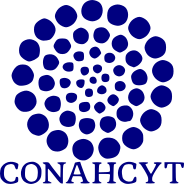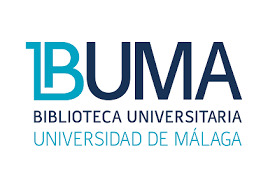Un enfoque integrativo revela la identidad y la distribución interoceánica de la diatomea Halamphora adumbratoides Stepanek & Kociolek 2018 (Bacillariophyceae: Amphipleuraceae)
DOI:
https://doi.org/10.18387/polibotanica.58.2Palabras clave:
first recording, Gulf of California, Pacific Ocean, psbC, rbcL, SSU.Resumen
Halamphora adumbratoides fue descrita en 2018 en muestras procedentes del Océano Atlántico, siendo Florida Bay, USA, la localidad tipo para esta especie. En esta publicación, presentamos las características morfológicas y la identidad molecular de este taxón (cepa CIBA 160) colectado en el Golfo de California, México (en la región del Océano Pacífico). Las células de la cepa CIBA 160, fueron obtenidas mediante cultivos de laboratorio y muestra características que no corresponden con la descripción original, específicamente la forma de la valva y la presencia de poros al final de cada extremo del margen dorsal del rafe. En relación al tamaño, la longitud (4.1–6.6 μm) de la cepa CIBA 160 es más corta que la descripción original (10.0–18.0 μm). Sin embargo, el ancho de la valva y el número de estrías coinciden con los intervalos de la descripción. A nivel molecular, las secuencias del DNA de la cepa CIBA 160 mostraron 100, 99.8, y 99.5% de similitud, respectivamente con las secuencias de SSU, rbcL, y psbC de células de H. adumbratoides originarias del Océano Atlántico. Nuestro trabajo presenta el primer registro de la distribución interoceánica y el segundo registro para esta especie desde su descripción.
Referencias
An, S. M., Choi, D. H., Lee, J. H., Lee, H., & Noh, J. H. (2017). Identification of benthic diatoms isolated from the eastern tidal flats of the Yellow Sea: Comparison between morphological and molecular approaches. PLoS ONE, 12(6). https://doi.org/10.1371/journal.pone.0179422
Armbrust, E. V. (2009). The life of diatoms in the world’s oceans. Nature, 459(7244), 185–192. https://doi.org/10.1038/nature08057
Beszteri, B., John, U., & Medlin, L. K. (2007). An assessment of cryptic genetic diversity within the Cyclotella meneghiniana species complex (Bacillariophyta) based on nuclear and plastid genes, and amplified fragment length polymorphisms. European Journal of Phycology, 42(1), 47–60. https://doi.org/10.1080/09670260601044068
Darriba, D., Taboada, G., Doallo, R., & Posada, D. (2012). Darriba D, Taboada GL, Doallo R, Posada D.. jModelTest 2: more models, new heuristics and parallel computing. Nat Methods 9: 772. Nature Methods, 9, 772. https://doi.org/10.1038/nmeth.2109
Desianti, N., Potapova, M., & Beals, J. (2015). Examination of the type materials of diatoms described by Hohn and Hellerman from the Atlantic Coast of the USA. Diatom Research, 30, 1–24. https://doi.org/10.1080/0269249X.2014.1000020
Doyle, J. (1991). DNA Protocols for Plants BT - Molecular Techniques in Taxonomy (G. M. Hewitt, A. W. B. Johnston, & J. P. W. Young (eds.); pp. 283–293). Springer Berlin Heidelberg. https://doi.org/10.1007/978-3-642-83962-7_18
Estes, A., & Dute, R. (1994). Valve abnormalities in diatom clones maintained in long-term culture. Diatom Research, 9, 249–258. https://doi.org/10.1080/0269249X.1994.9705305
Evans, K., Wortley, A. H., & Mann, D. (2007). An Assessment of Potential Diatom “Barcode” Genes (cox1, rbcL, 18S and ITS rDNA) and their Effectiveness in Determining Relationships in Sellaphora (Bacillariophyta). Protist, 158, 349–364. https://doi.org/10.1016/j.protis.2007.04.001
Falasco, E., Bona, F., Ginepro, M., Hlubikova, D., Hoffmann, L., & Ector, L. (2009). Morphological abnormalities of diatom silica walls in relation to heavy metal contamination and artificial growth conditions. Water S.A, 35, 595–606. https://doi.org/10.4314/wsa.v35i5.49185
Guillard, R. R. L. (1975). Culture of Phytoplankton for Feeding Marine Invertebrates. In M. L. Smith & M. H. Chanley (Eds.), Culture of Marine Invertebrate Animals (pp. 29–60). Plenum Press. https://doi.org/10.1007/978-1-4615-8714-9_3
Guillard, R. R. L. (2005). Purification methods for microalgae. In R. A. Andersen (Ed.), Algal culturing techniques (pp. 117–132). Elsevier Academic Press. Phycological Society of America.
Guiry, M.D. & Guiry, G.M. (2023) AlgaeBase. World-wide electronic publication, National University of Ireland, Galway. http://www.algaebase.org; searched on 8 may 2023.
Guindon, S., & Gascuel, O. (2003). A Simple, Fast, and Accurate Algorithm to Estimate Large Phylogenies by Maximum Likelihood. Systematic Biology, 52, 696–704. https://doi.org/10.1080/10635150390235520
Herrera, A., Medlin, L., Murugan, G., Sierra, A., Cruz, A., & Hernandez Saavedra, N. (2014). Are Prorocentrum hoffmannianum and Prorocentrum belizeanum (DINOPHYCEAE, PROROCENTRALES), the same species? An integration of morphological and molecular data. Journal of Phycology, 51. https://doi.org/10.1111/jpy.12265
Levkov, Z. (2009). Amphora sensu lato. In H. Lange-Bertalot (Ed.), Diatoms of Europe: Diatoms of the Europe inland waters and comparable habitats (p. 916). A.R.G. Gantner Verlag K. G.
Li, C. L., Witkowski, A., Ashworth, M., Dąbek, P., Sato, S., Zgłobicka, I., Witak, M., Khim, J. S., & Kwon, C. J. (2018). The morphology and molecular phylogenetics of some marine diatom taxa within the Fragilariaceae, including twenty undescribed species and their relationship to Nanofrustulum, Opephora and Pseudostaurosira. Phytotaxa, 355(1), 1–104. https://doi.org/10.11646/phytotaxa.355.1
López-Fuerte, F. O., Sala, S. E., Lora-Vilchis, M. C., & Murugan, G. (2020). Halamphora siqueirosii (Bacillariophyta), a new diatom species isolated from a hypersaline evaporation pond in Baja California Peninsula, Mexico. Phytotaxa, 451(2), 132–144. https://doi.org/10.11646/phytotaxa.451.2.3
Malviya, S., Scalco, E., Audic, S., Vincent, F., Veluchamy, A., Poulain, J., Wincker, P., Iudicone, D., De Vargas, C., Bittner, L., Zingone, A., & Bowler, C. (2016). Insights into global diatom distribution and diversity in the world’s ocean. Proceedings of the National Academy of Sciences of the United States of America, 113(11), E1516–E1525. https://doi.org/10.1073/PNAS.1509523113/-/DCSUPPLEMENTAL/PNAS.1509523113.SAPP.PDF
Mann, D. G. (1999). The species concept in diatoms. Phycologia, 38(6), 437–495. https://doi.org/10.2216/i0031-8884-38-6-437.1
Mann, D., Sato, S., Trobajo, R., Vanormelingen, P. & Souffreau, C. (2010). DNA barcoding for species identification and discovery in diatoms. Cryptogamie Algologie, 31, 557–577.
Mann, D., Trobajo, R., Sato, S., Li, C., Witkowski, A., Rimet, F., Ashworth, M., Hollands, R., & Theriot, E. (2020). Ripe for reassessment: A synthesis of available molecular data for the speciose diatom family Bacillariaceae. Molecular Phylogenetics and Evolution, 158, 106985. https://doi.org/10.1016/j.ympev.2020.106985
Medlin, L. K., Elwood, H. J., Stickel, S. & Sogin, M. L. (1991). Medlin1991.Pdf. In Journal of Phycology (Vol. 27, pp. 514–524).
Mohamad, H., Mora, D., Skibbe, O., Abarca, N., Deutschmeyer, V., Enke, N., Kusber, W.-H., Zimmermann, J., & Jahn, R. (2022). Morphological variability and genetic marker stability of 16 monoclonal pennate diatom strains under medium-term culture. Diatom Research, 37. https://doi.org/10.1080/0269249X.2022.2141346
Mora, D., Abarca, N., Proft, S., Grau, J., Enke, N., Jiménez, J., Skibbe, O., Jahn, R., & Zimmermann, J. (2019). Morphology and metabarcoding: a test with stream diatoms from Mexico highlights the complementarity of identification methods. Freshwater Science, 38, 448–464. https://doi.org/10.1086/704827
Onuma, R., Mishra, N., & Miyagishima, S.-Y. (2017). Regulation of chloroplast and nucleomorph replication by the cell cycle in the cryptophyte Guillardia theta. Scientific Reports, 7(2345). https://doi.org/10.1038/s41598-017-02668-2
Petrova, D., Bedoshvili, Y., Zakharova, Y., Volokitina, N., Likhoshway, Y., & Grachev, M. (2020). Changes in valve morphology of two pennate diatom species during long-term culture. Acta Biologica Sibirica, 6, 669–678. https://doi.org/10.3897/abs.6.e57888
Ronquist, F., Teslenko, M., van der Mark, P., Ayres, D., Darling, A., Höhna, S., Larget, B., Liu, L., Suchard, M., & Huelsenbeck, J. (2012). MrBayes 3.2: Efficient Bayesian phylogenetic inference and model choice across a large model space. Systematic Biology, 61(3), 539–542. https://doi.org/10.1093/sysbio/sys029
Rose, D. T., & Cox, E. J. (2013). Some diatom species do not show a gradual decrease in cell size as they reproduce. Fundamental and Applied Limnology, 182(2), 117–122. https://doi.org/10.1127/1863-9135/2013/0406
Stepanek, J. G., & Kociolek, J. P. (2013). Several new species of Amphora and Halamphora from the western USA. Diatom Research, 28(1), 61–76. https://doi.org/10.1080/0269249X.2012.735205
Stepanek, J., & Kociolek, P. (2015). Three new species of the diatom genus Halamphora (Bacillariophyta) from the prairie pothole lakes region of North Dakota, USA. Phytotaxa, 197, 27–36. https://doi.org/10.11646/phytotaxa.197.1.3
Stepanek, J., & Kociolek, P. (2018). Amphora and Halamphora from coastal and inland waters of the United States and Japan, with the description of 33 new species. In Lange-Bertalot, H. & Kociolek, J. P. Bibliotheca Diatomologica, volume 66, Gebr. Borntraeger Verlagsbuchhandlung, 260 pp.
Stepanek, J., & Kociolek, P. (2019). Molecular phylogeny of the diatom genera Amphora and Halamphora (Bacillariophyta) with a focus on morphological and ecological evolution. Journal of Phycology, 55. https://doi.org/10.1111/jpy.12836
Stepanek, J., Mayama, S., & Kociolek, P. (2015). Description and phylogenetic position of Amphora aliformis (Bacillariophyta), a new species from Tokyo Bay. Phycologia, 54, 78–86. https://doi.org/10.2216/14-081.1
Swofford, D. (2002). PAUP*. Phylogenetic Analysis Using Parsimony (*and Other Methods). Version 4.0b10. In version 4.0b10 edn: Vol. Version 4. Sinauer,Associates, Sunderland. https://doi.org/10.1111/j.0014-3820.2002.tb00191.x
Van de Vijver, B., Kopalova, K., Zidarova, R., & Levkov, Z. (2014). Revision of the genus Halamphora (Bacillariophyta) in the Antarctic Region. Plant Ecology and Evolution, 147, 374–391. https://doi.org/10.5091/plecevo.2014.979
Wachnicka, A. & Gaiser, E. (2007). Characterization of Amphora and Seminavis from South Florida, USA. Diatom Research, 22, 387–455. https://doi.org/10.1080/0269249X.2007.9705722
Descargas
Publicado
Número
Sección
Licencia

Polibotánica por Departamento de Botánica de la Escuela Nacional de Ciencias Biológicas del Instituto Politécnico Nacional se distribuye bajo una Licencia Creative Commons Atribución-NoComercial-CompartirIgual 4.0 Internacional.




















